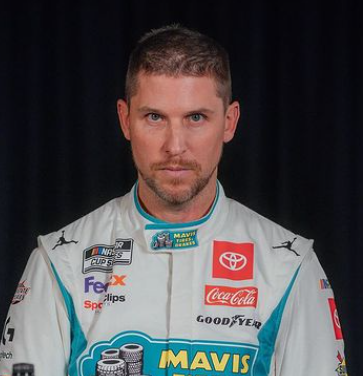Denny Hamlin’s journey this season is a testament to resilience and determination. Despite facing a challenging phase of results, his recent top 5 finish at Pocono highlights his ability to bounce back and compete at the highest level
With the support of his team and valuable insights from fellow drivers like Kevin Harvick, Hamlin is well-positioned to navigate the remaining races and make a strong push for the championship.
His story serves as an inspiration for aspiring drivers and underscores the importance of mental toughness and adaptability in the world of racing.
Kevin Harvick’s insights into the impact of the Next Gen car on NASCAR provide a valuable perspective on the current state of the sport.
The increased unpredictability, narrower competition gap, and shift in race strategy have made it harder for any one driver to dominate consistently.
These changes have added to the excitement and complexity of NASCAR, making it an even more thrilling spectacle for fans and participants alike. As the sport continues to evolve, the Next Gen car will undoubtedly play a crucial role in shaping its future.
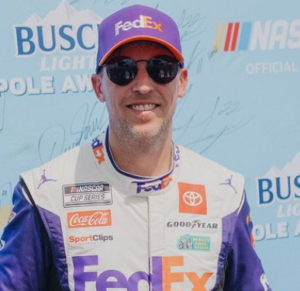
Also Read: Kyle Larson Seeks Respect from Denny Hamlin Post-Nashville Showdown
Table of Contents
Denny Hamlin: The Comeback
A Season Marked by Ups and Downs
Denny Hamlin, a prominent driver for Joe Gibbs Racing, has experienced a rollercoaster season. Despite securing three victories this year, Hamlin found himself in a challenging phase over the past five weeks.1
This stretch was marred by disappointing finishes, raising concerns about his performance. However, his recent top 5 finish at Pocono has sparked a resurgence, earning him praise from fellow driver Kevin Harvick for his unwavering mentality and tenacity.
Hamlin’s season started on a high note, with impressive performances that included four consecutive top 5 finishes following his win at Dover.
His consistency and determination were evident, positioning him as a strong contender in the championship race.
This remarkable run showcased Hamlin’s ability to compete at the highest level and maintain a competitive edge.
Absolutely grateful for @23XIRacing, @TylerReddick and @BubbaWallace. When it comes to activation off the track no-one is even close. Thank you to our great management team for making this all happen. pic.twitter.com/CAezAxJ2eU
— Denny Hamlin (@dennyhamlin) July 6, 2024
The Downturn: A String of Disappointing Results
Following his runner-up finish at Gateway, Hamlin faced a series of setbacks. His subsequent races resulted in a DNF at Gateway, 24th at Iowa, 24th at New Hampshire, 12th at Nashville, and 30th at Chicago.
This rough patch of results significantly impacted his standings and morale. Despite the challenges, Hamlin remained focused and determined to turn his season around.
The Turnaround: A Runner-Up Finish at Pocono
Hamlin’s resilience paid off with a remarkable runner-up finish at Pocono. This performance not only broke his streak of disappointing results but also highlighted his ability to bounce back under pressure.
Kevin Harvick, speaking on the Happy Hour podcast, praised Hamlin’s mentality and tenacity, emphasizing the importance of stopping the bleeding and regaining momentum.
“Denny Hamlin’s tough, and when you look at Denny, they’ve had a rough five weeks as far as finishes go. When you look at Pocono and the finish he had there, they had a solid day.
You heard him say after the race, ‘We had a solid day from start to finish.’ They needed to stop the bleeding. It’s not that they had been running bad, but sometimes you just get in these funks where you can’t get those finishes,” Harvick said.
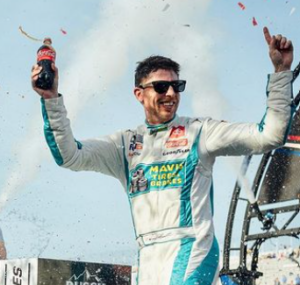
Denny Hamlin vs. Kyle Busch: Comparison
Harvick also drew comparisons between Hamlin’s situation and that of Kyle Busch. The RCR driver has been struggling with poor performances, including four DNF finishes in his last seven races.2
Harvick highlighted the key difference between the two drivers: Hamlin’s #11 car possesses the necessary speed, whereas Busch’s #8 car does not. This distinction, according to Harvick, makes a significant impact on their respective performances.
The Next Gen Car: A Factor in Performance Variability
Harvick’s analysis extended to the broader context of the Next Gen car, which has introduced new challenges and variability in performance.
He pointed to Christopher Bell’s earlier struggles in the season, where the JGR driver faced a series of “miserable finishes.” This inconsistency is something Harvick believes is a hallmark of the Next Gen car, affecting drivers across the board.
Harvick’s perspective on Hamlin’s recent performances provides valuable insight into the dynamics of racing. His acknowledgment of Hamlin’s resilience and the challenges posed by the Next Gen car underscores the complexities drivers face. Harvick’s comments also highlight the importance of mental toughness and adaptability in overcoming difficult phases.
The Importance of Mental Toughness in Racing
In the highly competitive world of racing, mental toughness is a crucial attribute. Hamlin’s ability to maintain focus and determination despite setbacks demonstrates the importance of a strong mindset.
Harvick’s appreciation for Hamlin’s mentality underscores the significance of mental resilience in achieving success on the track.
Another factor contributing to Hamlin’s resurgence is the support from his team. The collective effort of Joe Gibbs Racing plays a pivotal role in maintaining the performance and morale of their drivers.
The team’s ability to adapt, strategize, and provide necessary support during challenging times is instrumental in achieving positive outcomes.
The Path Forward: Building on Recent Success
- Hamlin’s recent success at Pocono serves as a foundation for building momentum in the remaining races of the season. His ability to bounce back from a difficult phase demonstrates his potential to compete at the highest level.
- The focus now shifts to maintaining consistency and capitalizing on the positive momentum to secure further top finishes.
- Harvick’s advice for Hamlin revolves around maintaining a balanced approach and focusing on incremental improvements.
- Recognizing the challenges posed by the Next Gen car and the variability in performance, Harvick emphasizes the importance of staying patient and continuing to refine strategies.
- Hamlin’s performance trajectory has broader implications for the championship race. As one of the leading contenders, his ability to regain form and secure top finishes could influence the overall standings.
- The dynamic nature of the racing season, coupled with the challenges introduced by the Next Gen car, adds an element of unpredictability to the championship race.
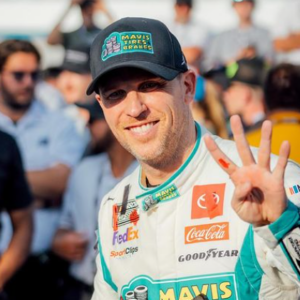
Also Read: Denny Hamlin Confident in Contending for a Win at Nashville NASCAR Race
Kevin Harvick’s Perspective on the Next Gen Car
Kevin Harvick, a veteran of the NASCAR circuit, has expressed strong opinions about the impact of the Next Gen car on racing dynamics.3
According to Harvick, the introduction of this new vehicle has significantly altered the competitive landscape of NASCAR, making it difficult for any single driver to dominate the field consistently.
One of the primary aspects Harvick pointed out is the unpredictability introduced by the Next Gen car. He mentioned that right from the outset, it was clear that this car would lead to more unpredictable outcomes in races.
The variability in performance is more pronounced now, with factors like mid-pack wrecks and cars being off pace becoming more common.
Decreased Consistency in Results
Harvick highlighted that the changes have resulted in fewer consistent top finishes for drivers. In the previous generation of cars, drivers could expect a higher number of top 5 and top 10 finishes.
However, with the Next Gen car, these consistent results have become rarer. The former NASCAR driver attributes this to the narrower gap in competition, which has made races more unpredictable and competitive.
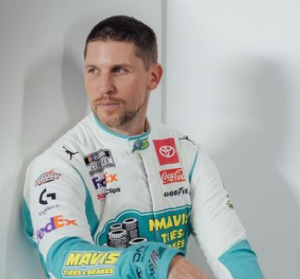
The Strategy Shift
Another significant change brought about by the Next Gen car is in race strategy. Harvick noted that strategies have become “more wide open,” leading to a more dynamic and less predictable race environment.
This shift in strategy has further contributed to the difficulty in achieving consistent results, as teams and drivers have to adapt to a broader range of variables.
The Impact of Stage Racing
Stage racing, a relatively new addition to NASCAR, has also played a role in the decreased dominance of individual drivers.
According to Harvick, the introduction of stage racing has flipped the dynamics of the races, making it harder for any one driver to maintain a lead over an extended period. This change has added another layer of complexity to race strategy and performance.
Harvick emphasized that the competition gap has narrowed significantly with the Next Gen car. The difference in performance between the top teams and the rest of the field has decreased, leading to closer and more competitive races.
This narrowing gap means that even the best drivers can no longer rely on their superior equipment or skill to guarantee top finishes consistently.
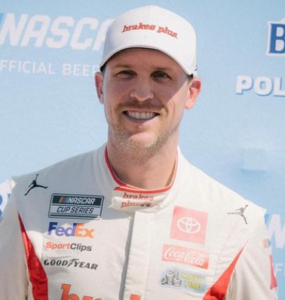
Denny Hamlin: New Dynamics
Drivers and teams have had to adapt to the new dynamics introduced by the Next Gen car. This adaptation process has been challenging, as it requires a shift in mindset and strategy.
Harvick pointed out that the traditional approaches that worked in the past are no longer as effective, and teams have had to innovate and experiment to find success in this new environment.
The Role of Luck
Luck has always played a role in racing, but Harvick believes it has become even more significant with the Next Gen car.
The increased unpredictability and closer competition mean that luck can have a more substantial impact on the outcome of races. A minor incident or a split-second decision can make the difference between a top finish and a disappointing result.
For drivers, the Next Gen car has presented a unique set of challenges. The increased unpredictability and competition have tested their skills and adaptability.
Harvick noted that drivers have to be more versatile and prepared for a wider range of scenarios. This increased demand on drivers has added to the overall excitement and intensity of the races.
View this post on Instagram
The Fan Perspective
From a fan’s perspective, the changes brought by the Next Gen car have added to the excitement of NASCAR. The unpredictability and closer competition make for more thrilling and engaging races.
Fans can no longer predict with certainty which driver will come out on top, adding an element of suspense and intrigue to each race.
Harvick believes that the Next Gen car will continue to shape the future of NASCAR. The changes it has introduced are likely to have a lasting impact on the sport.
Teams and drivers will continue to adapt and innovate, leading to an ever-evolving and dynamic racing environment.
Also Read: Denny Hamlin Boldly Predicts Victory For The #11 Team in the Upcoming Racing Season
